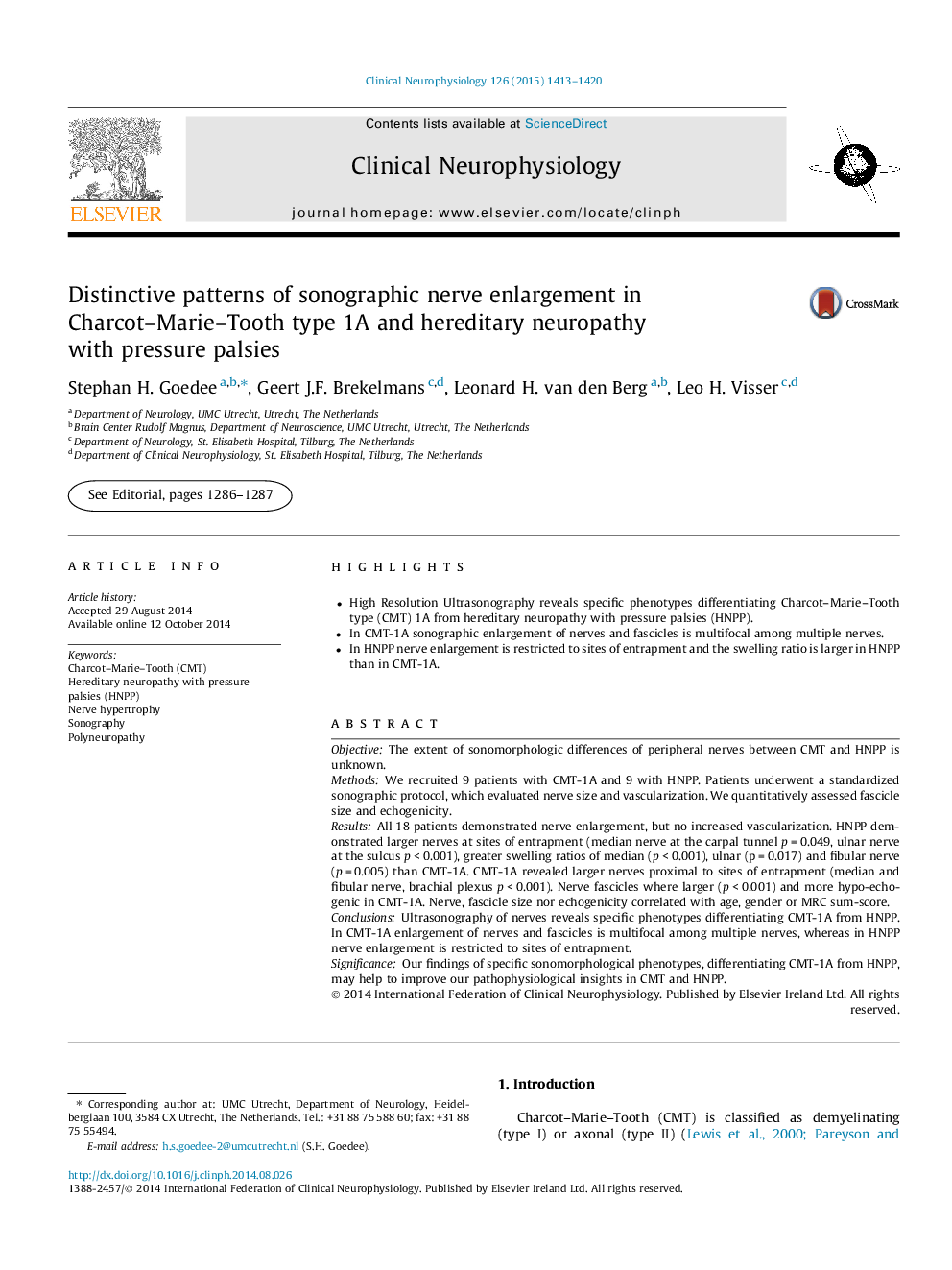| Article ID | Journal | Published Year | Pages | File Type |
|---|---|---|---|---|
| 6007741 | Clinical Neurophysiology | 2015 | 8 Pages |
â¢High Resolution Ultrasonography reveals specific phenotypes differentiating Charcot-Marie-Tooth type (CMT) 1A from hereditary neuropathy with pressure palsies (HNPP).â¢In CMT-1A sonographic enlargement of nerves and fascicles is multifocal among multiple nerves.â¢In HNPP nerve enlargement is restricted to sites of entrapment and the swelling ratio is larger in HNPP than in CMT-1A.
ObjectiveThe extent of sonomorphologic differences of peripheral nerves between CMT and HNPP is unknown.MethodsWe recruited 9 patients with CMT-1A and 9 with HNPP. Patients underwent a standardized sonographic protocol, which evaluated nerve size and vascularization. We quantitatively assessed fascicle size and echogenicity.ResultsAll 18 patients demonstrated nerve enlargement, but no increased vascularization. HNPP demonstrated larger nerves at sites of entrapment (median nerve at the carpal tunnel p = 0.049, ulnar nerve at the sulcus p < 0.001), greater swelling ratios of median (p < 0.001), ulnar (p = 0.017) and fibular nerve (p = 0.005) than CMT-1A. CMT-1A revealed larger nerves proximal to sites of entrapment (median and fibular nerve, brachial plexus p < 0.001). Nerve fascicles where larger (p < 0.001) and more hypo-echogenic in CMT-1A. Nerve, fascicle size nor echogenicity correlated with age, gender or MRC sum-score.ConclusionsUltrasonography of nerves reveals specific phenotypes differentiating CMT-1A from HNPP. In CMT-1A enlargement of nerves and fascicles is multifocal among multiple nerves, whereas in HNPP nerve enlargement is restricted to sites of entrapment.SignificanceOur findings of specific sonomorphological phenotypes, differentiating CMT-1A from HNPP, may help to improve our pathophysiological insights in CMT and HNPP.
